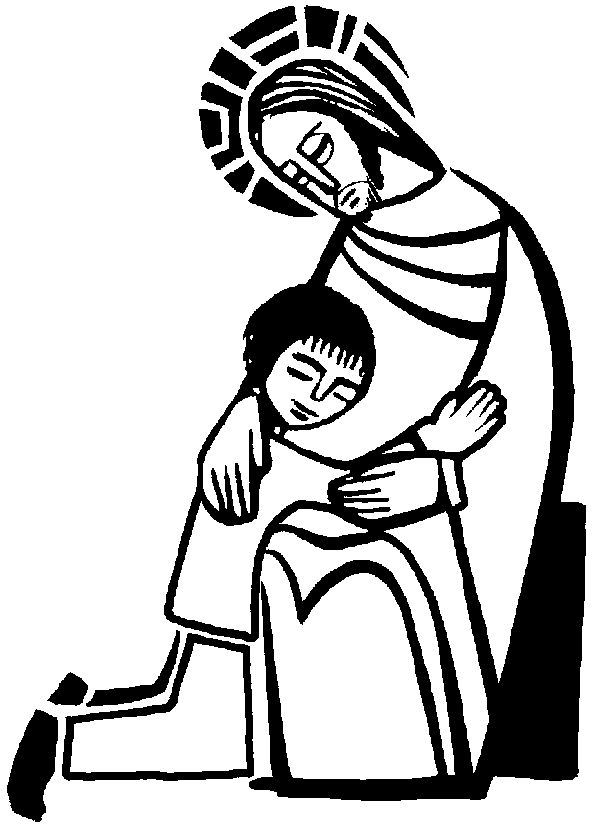I have been toying with writing a post on Springsteen’s new album and the song “Land of Hope and Dreams,” but over at Daily Theology, Katherine Greiner, a Ph.D. student at Boston College’s School of Theology and Ministry, has an amazing post doing just that. Greiner calls us to reflect on The Road to Emmaus and Bruce Springsteen’s “Wrecking ball”: The Journey Back to Community” :
Luke’s story of the two disciples on the road to Emmaus begins and ends with journey. After experiencing excruciating disappointment and loss, the two leave the bereaved and frightened community in Jerusalem and set out to Emmaus. They seem to be thinking that their time with Jesus was great, but like some much in life, it was just a fleeting moment of inspiration and hope in a life full of hardship and disillusion. Heads down, hearts broken, they leave the community behind. Contrast this with what happens after their encounters with Jesus first on the road and then in the breaking of the bread. Armed with the conviction that Jesus issomehow raised and alive in their hearts, they get back on the road, returning to the frightened, saddened, and perplexed community. They don’t know what they are going to face in the next few days. They don’t know what kind of lives they will be asked to live, but they seem to know that they must not go it alone.
What does this have to do with Bruce Springsteen’s newest album “Wrecking Ball”? In some ways, both journeys depicted in Luke’s story are main themes present in Bruce’s long list of works. If we listen to Springsteen’s catalogue chronologically we witness his subtle growth from the disappointed, disillusioned guy who leaves home behind in hopes of finding redemption somewhere else to the man who realizes just how entangled and committed he is to his community. “Wrecking Ball” is the culmination of Bruce’s long and winding journey of faith in community.
“Wrecking Ball” covers many of Springsteen’s most common themes: justice, pain, love, heartache, hope, doubt. But instead of simply recycling old stories, he creates new insights using his most beloved and familiar narratives. For example, contrast his 1984 song “My Hometown,” the final track on “Born in the USA” with “Death to My Hometown” on “Wrecking Ball”. The first reflects one solitary man fatalistically lamenting the slow demise of the only place and life he knows. In “Death to My Hometown”, we hear a chorus of riled voices angrily admonishing the “robber barons” who stealthily took advantage of the average working class. The main difference? Community. Sad and alone, the man in “My Hometown” feels he has no choice but to leave, while the angry crowd in “Death to My Hometown” promises to stick it out and fight together.
“Wrecking Ball” is packed with Bruce’s righteous anger and sadness at the wide injustice and destruction present in our world—another favorite subject of Springsteen’s. We hear the anger in his admonishment of the government’s handling of Hurricane Katrina in “We Take Care of Our Own” and we sense his heartache and struggle in “My Depression” and “Rocky Ground.” But in the midst of the anger and the sadness, songs like “We Are Alive” and “Land of Hope and Dreams” reassure us that ultimately communal love and faith will overcome all.
Like the two disciples on the road back to Jerusalem, Springsteen returns to the community proclaiming that this world is worth fighting for —even if it breaks our hearts. “Wrecking Ball” destroys the old myth that somehow if we just get in our cars and head out on our own—away from the pain and heartache —we will find happiness and peace. Bruce shares with us something that he has suspected for awhile. The lonely highways and byways cannot offer the salvation and redemption for which we yearn. Going it alone means an assured death. But if, and only if, we return to stand with and for the crucified in our midst, fighting and struggling together, hope will re-emerge and salvation will surely be ours.





Meghan, I’m grateful both to you and to Katherine for this post. And I certainly think that Springsteen’s music is rich enough to bear this kind of discussion, which I hope this comment might move forward. However, I think that this post reverses something very crucial, and this reversal is something very common and reflected very much in Springsteen’s music. The disciples who encounter Jesus on the road to Emmaus do return to community, but not so much because the community is their only hope to get through this trying time. Rather, they have encountered the Risen Lord, and they return to the community because the community needs to hear that good news. Now, I’m a big proponent of the importance of the common good, of the inherently social nature of the human community, and of the idea that no one can survive (let alone flourish) alone. But I’m intrigued–and “Land of Hope and Dreams” is the very center of this for me–by what seems to me a pretty explicit turn away from transcendent hope and into a mixed assessment of a more temporal hope in community (which clearly comes with some despair in the same). Take a listen to “Land of Hope and Dreams” together with “This Train is Bound for Glory” (I’m a fan of Johnny Cash’s version, but there are a lot of versions). It seems to me that the Boss has taken the train reserved to the “righteous and holy” and made it into a train for everyone (saints and sinners, fools and kings, etc). But he’s replaced a train bound for glory with a train … going nowhere. And, fine by me. I’ll take that as a great expression of exactly where we’re at culturally, and I’ll be intrigued enough to wonder how theologically astute he was being by including “Swallowed Up (In the Belly of the Whale).” Jonah, of course, is a pretty explicit resurrection reference. But the song leaves us swallowed up, not released into a new life of prophecy and proclamation. The community that the disciples left when they left for Emmaus was the one that had nothing to hope in but one another. There was a much different hope after that encounter in the breaking of the bread. I think Bruce’s music is a lifetime of being haunted by the possibility of that very reality, but I think Wrecking Ball is written from the belly of the whale. Bruce may be calling us to stand with the crucified in our midst, but that’s not what anyone is doing at this point in the Gospel (or in the liturgical year). Rather, they are proclaiming the crucified-and-risen One. Seems like a big difference to me, and a bridge too far for Bruce, at least for now.
I am not sure we are listening to the same album. The first half of Wrecking Ball is clearly rooted in the belly of the whale (and this makes the placement of “Swallowed Up” as a “bonus track” a problem as far as track listing is concerned). I can think of few songs from Springsteen’s body of work as brimming with prophetic indictment as “Death to My Hometown.” However, even in this first half the protagonist of “Jack of All Trades” sings,
Now sometimes tomorrow comes soaked in treasure and blood
We stood the drought, now we’ll stand the flood
There’s a new world coming, I can see the light
Admittedly, this assurance of a new world is not enough to stem his angry desire to “find the bastards and shoot ’em on sight.” In these lyrics I find the honesty to explore the relationship between the promise of grace and the seduction of sin. Additionally, I have always admired Springsteen’s ability to allow his characters their own voices in his songs, even when those voices may not agree with his own (“Empty Sky” also comes to mind).
You also fail to mention that “Land of Hope and Dreams” is bracketed by songs that declare “There’s a new day coming” (“Rocky Ground”) and visions of resurrection (“We Are Alive”).
I’m honored that Meghan reposted my humble attempt to write about Springsteen and theology. Dana, thank you so much for your very insightful and thought provoking response. You are right that the richness of Bruce’s work calls for a longer discussion about these issues and as my friends and family will attest, I’m more than happy to be part of that conversation! Thank you too for the Johnny Cash recommendation. I’ve since purchased and listened to it a few times! I also want to apologize. I wrote this reply in a word document before I read Gonzuller’s comment (which I very much appreciate!), so here I am only addressing Dana’s first comment.
Just to clarify: I agree with Dana that this Easter season is about proclaiming our faith and hope in the risen Christ. And while this may just be me, I cannot listen to Bruce without being filled with that same hope. For me, Bruce invites us into the paradoxical nature of hope and that’s where I think we are in the Gospel during this joyful liturgical season. All of the resurrection appearance accounts are charged with paradox—the disciples are fearful, overjoyed, confused, questioning, elated. We hear in the Gospel as much “huh?-lleluia” as “alleluia” and I take great comfort in that because that is certainly the situation from which many of us proclaim our hope in Christ. I also agree that the two disciples return to share the good news of their encounter with the risen Christ and they recount their encounter to the crucified community. The point I was trying to make in my post is that we stand with the crucified as we proclaim our hope and that is what I hear when I listen to “Wrecking Ball.”
I hear in “Wrecking Ball” a challenge to a new transcendent hope as much as it is a challenge to return to community. For example, we hear in “Rocky Ground” what sounds an awful lot like prayer: “Rise up, Shepherd, rise up./Your flock has roamed far from these hills./The stars have faded, the sky is still./Angels are shouting ‘Glory Halleluiah’.” Certainly Bruce’s hope is in something beyond us, and my point is that he expresses that this “something” cannot be experienced separated from the flock.
This leads me to a different interpretation of “Land of Hope and Dreams” than Dana presents. While she may be right that culturally we are adrift, I don’t think that is where Bruce wants us to stay. I hear “Land of Hope and Dreams” as the Gospel message. Imagine the risen Christ singing to us the words of the second verse: “I will provide for you and I’ll stand by your side. You’ll need a good companion now, for this part of the ride. Leave behind your sorrows. Let this day be the last. Tomorrow there’ll be sunshine and all this darkness past.” Bruce may not be as explicit about the train’s destination as Johnny Cash is in “Bound for Glory” but the train is not going “nowhere,” as the title itself suggests. Bruce’s focus is certainly on the journey and the destination may remain a mystery, but he knows the train is heading to a place where our hopes are realized and our “dreams will not be thwarted.” It is a place of faith, gratitude (you just thank the Lord) and liberation (bells of freedom ri-i-i-i-i-nging!).
As for “Swallowed Up (In the Belly of the Whale)” it is interesting to note that it is only available on the special edition version and that it comes in very, very slowly after “We Are Alive.” Maybe I am also guilty of reading too much into Bruce’s theological intentions, but perhaps this last song is a reminder to us that part of the challenge is that, unfortunately, we won’t always be so focused on resurrection. At some point we’re going to be back in the belly of the whale, back in the tomb, back to Holy Saturday—but that does not change the reality of hope in the resurrection that he alludes to in “Rocky Ground,” “Land of Hope and Dreams,” and “We Are Alive.” I think a lot us sing alleluia from the ‘belly of the whale.’ That’s a big part of the Easter mystery.
Katherine, thanks for taking the time to reply. Sorry I missed it until now. I’m going to give it another listen and some more thought and see about getting back to you on this.